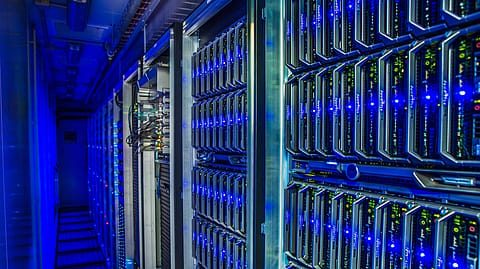Digital boom to drive data centre revenue to ₹20,000 cr by FY28; capex to reach ₹65,000 cr: Crisil
The capacity in the data centre sector is expected to double to 2.3–2.5 gigawatt (GW) by March 2028.

With digital usage soaring among businesses and retail users, India’s data centre sector is poised to touch ₹20,000 crore in annual revenue by FY28, clocking a robust 20–22% growth rate, Crisil said in its latest report. The industry is expected to incur capex of around ₹55,000–65,000 crore over fiscals 2026–2028 to cater to the surging demand.
In a bid to cater to the buoyant demand, capacity in the industry is expected to double to 2.3–2.5 GW by March 2028. “While capital expenditure (capex) is set to rise and will require sizeable debt funding, credit profiles should remain healthy as stable cash flows from operating capacities will keep leverage (gross debt/earnings before interest, taxes, depreciation and amortisation [Ebitda]) in control,” the report noted.
“The healthy revenue growth of 20–22% for data centre operators will emanate from robust industry capacity addition, which is expected to double by March 2028. The incremental capacity of 1.1–1.3 GW estimated to be commissioned during fiscals 2026–2028 is expected to achieve timely tie-up backed by strong demand and India’s data centre density of just 65 MW per exabyte, one of the lowest globally,” said Anand Kulkarni, Director, Crisil Ratings.
This will translate into comfortable utilisation of 90–95%, in line with the past three fiscals, he added.
According to the Crisil report, the growth of India’s data centre industry will be driven by three key factors. First, the rapid adoption of public cloud services as enterprises accelerate digital transformation. Second, rising investments in artificial intelligence (AI), which will boost the need for high-density computing infrastructure. And third, the proliferation of 5G technology, which is increasing demand for low-latency applications—such as video streaming, online gaming and IoT devices—thereby requiring data centres to be located closer to end-users.
“The industry is expected to incur capex of ₹55,000–65,000 crore over fiscals 2026–2028 to cater to the surging demand. While this would require sizeable debt funding, growing Ebitda from operational capacities will keep leverage steady at 4.6–4.7 times and support credit profiles,” said Nitin Bansal, Associate Director, Crisil Ratings.
The report highlighted that data centre credit profiles stand to benefit from strong customer stickiness, supported by high switching costs and long-term contracts—particularly with hyperscalers. The share of hyperscalers in the overall revenue mix has been rising, and they now contribute to more than half of capacity tie-ups, offering operators stable and predictable cash-flow visibility.
Recommended Stories
However, hyperscalers also wield significant bargaining power due to their scale. Many are expected to build their own captive data centres over the medium term, which could intensify competition and pressure pricing for third-party operators. As a result, average contract prices—largely stable over the past two fiscals—remain a key monitorable.
Going forward, the ability of data centre operators to commission capacities in a timely manner and tie up with customers at adequate rates will bear watching, the report noted.